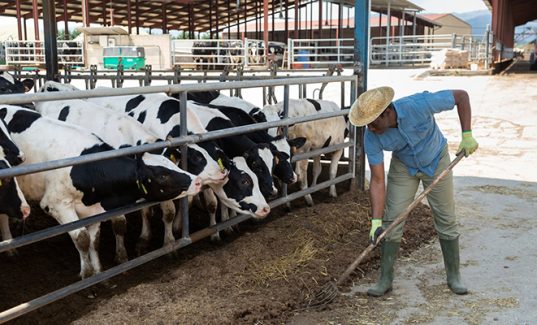Tasmanian milk production hit a record high of more than 800 million litres (ML) last financial year.
The figure of 804.5ML was an increase of 5.8 per cent on the previous financial year.
Record prices were also paid by processors.
“Last November we were all wondering what had happened to spring but then – to the credit of everyone in our industry – the decisions that were made, the resources, support and tools used at the time, allowed farmers to take advantage of the exceptional autumn which followed,” DairyTas chair Cheryl McCartie said.
“The record production, combined with a record milk price, has allowed farm businesses to reduce debt and consolidate or reinvest in their farms.”
The record pushed Tasmania to the position of third-largest dairy State behind Victoria and NSW.
“Tasmania is the only State in Australia consistently growing its milk production,” Ms McCartie said.
“The 2014-15 milk meter shows we are 12.5pc up on last year in milk production for the period to the end of September.”
More than 20 projects and activities were co-ordinated and managed by DairyTas in the past financial year, the DairyTas annual general meeting at Longford, Tas, was told last week.
Programs covered a range of areas including business management, natural resource management, people and careers, industry promotion and image, animal health and welfare, and feedbase.
“These programs have strong farmer engagement and give us penetration to the majority of our dairy farmers across Tasmania,” Ms McCartie said.
“The six new regional farmer advisory groups provide DairyTas with greater regional input into its plans and activities.”
Executive officer Mark Smith said DairyTas continued to attract significant government support for its projects.
“At any one time we are managing between 20 and 30 projects,” Mr Smith said.
One of the key areas on which the organisation was focusing was Into Dairy, a project encouraging conversions into the industry.
“We are on a reasonable track there but we have to say that most of that growth is coming from our existing farms’ per cow improvement, the season we have recently seen and a reasonably good milk price,” Mr Smith said.
“What we are looking for in the future is commensurate growth in new farms.
“We are getting a reasonable amount of interest but quite a bit of that interest hasn’t yet settled in terms of an actual investment taking place.”
Source: Stock & Land




